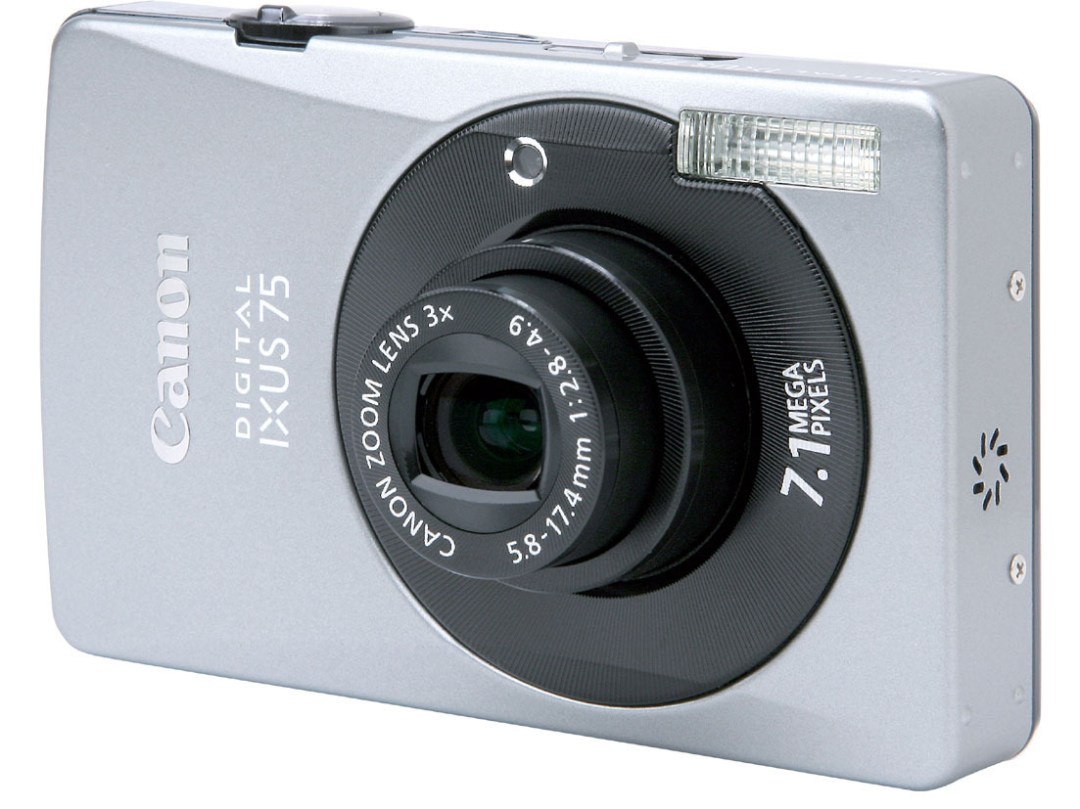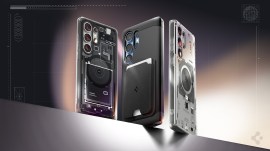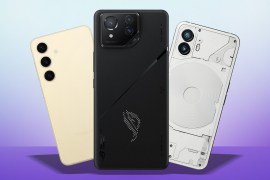Canon Ixus 75 review
Canon’s slimline Ixus gets touch-sensitive controls and face recognition for your point-and-shoot pleasure

Much as we admire the stunning pixel-perfect results from Canon’s Powershot line-up, our pulses have always raced a little higher for the flawlessly styled Ixus range.
The 75 is no exception. At just 19.6mm, it’s even slimmer than its predecessor, the 65, shaving off all of a hair’s-width (0.6mm to be precise). While it’s been at it, it’s chucked in an extra megapixel to now go to 7.1 and – more importantly – it’s got the new Digic III processor. More on that later.
Chip off the old block
Anyone who’s handled, nay fondled, the 65 will be right at home with this model. It shares the same two-tone grey/black styling, super-large 3in display and ‘touch sensitive’ controls. The look’s been updated with a black metal surround to the lens and an overall more solid metallic feel. All very pleasing to the eye.
As before, the cam also has a retro-looking sister model, the 70. It eschews the large display for a 2.5in screen which allows it to squeeze in the optical viewfinder that this cam lacks. It also loses the touch-sensitive controls.
Otherwise this model and the 70 are near identical in features and will each slip stealthily into a jean pocket or manbag. For what it’s worth, the touch-sensitive dial is no iPod clickwheel. After a quick and inaccurate play, it’s much easier just to press the buttons normally, so don’t make it your deal breaker.
The third age
The Digic III is the heart of all Canon’s new cameras. With more processing power than before, it promises an all-round faster experience, plus a couple of nice extras such as in-camera red-eye reduction and face recognition.
These last two work a treat. We found faces well exposed an in-focus, even when the background was filled with auto-focus distracting objects. Removing red-eye through the playback menu was also a doddle – taking out all but the most demon eyes in one step.
Video is a decent 640×480 at 30fps but far more fun is the new Time Lapse mode, destined to become a killer feature. It snaps a VGA-quality picture every one to two seconds for up to two hours before playing the results back, flipbook style. Use it to record petals opening on a delicate flower or to conduct an exhaustive time and motion study of the office. Productivity will soar.
Take it easy
Touch-sensitive controls aside, the camera is extremely easy to use. It passed our ‘do-we-need-the-manual?’ test with flying colours. Scene modes handle most tricky situations with aplomb though auto mode was usually spot-on.
Manual mode allows you to fine-tune the ISO, tweak the exposure or manually select a long shutter speed (between 1 and 15 seconds) but otherwise it’s the camera that does all the thinking.
The lens has a 3x optical zoom with a nice range of 35-105mm, which makes it a touch wider than most cameras and so easier to fit groups into shot or take in more of the scenery.
The picture quality is excellent for a pocket snapper, but perhaps not quite what we’d expect from a Canon. Whacking up the ISO is the only option when taking shots in low-light without the flash but the results were decidedly noisy. An anti-shake mechanism would have helped here.
Otherwise this is a great, easy-to-use snapper. It may cost more than your average point-and-shoot, but it’s worth the investment.
Use it with…
Stuff Essentials – Compact camera accessories



